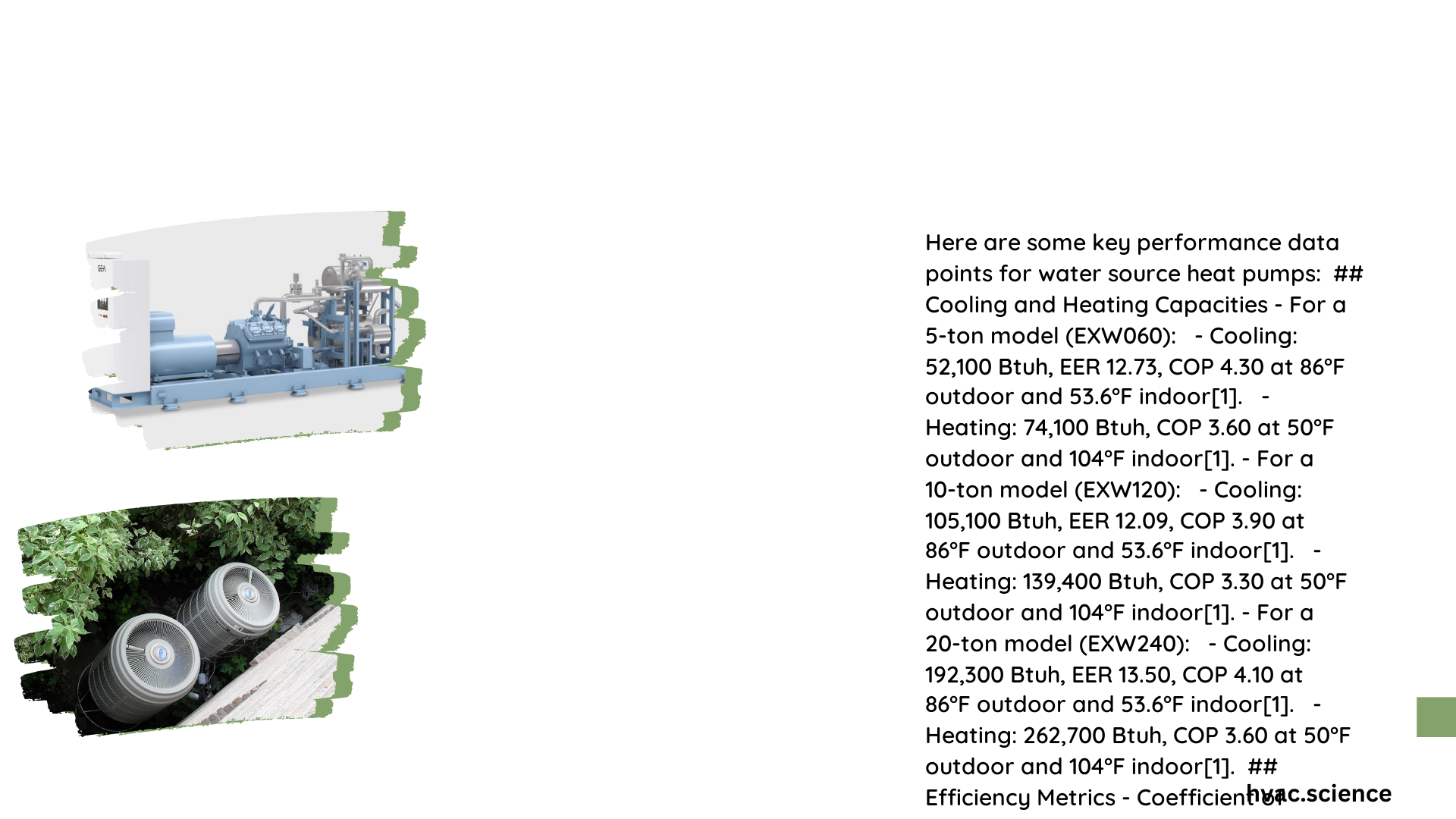Water source heat pump performance data reveals critical insights into thermal efficiency, energy conversion capabilities, and operational characteristics across diverse environmental conditions. These systems demonstrate remarkable energy transfer capabilities, with efficiency metrics like Energy Efficiency Ratio (EER) and Coefficient of Performance (COP) providing comprehensive understanding of their technological sophistication and real-world energy management potential.
What Makes Water Source Heat Pump Performance Data Critical?
Water source heat pump performance data represents a comprehensive technical evaluation of thermal transfer systems, offering engineers and building managers precise insights into energy conversion efficiency. Unlike traditional HVAC solutions, these systems leverage water as a thermal medium, enabling superior heat exchange capabilities.
How Do Efficiency Ratings Impact Performance?
Energy Efficiency Ratio (EER) Analysis
- Standard Testing Conditions:
- Air temperature: 80°F dry bulb, 67°F wet bulb
- Water temperature: 85°F entering heat exchanger
- Flow rate controlled for 95°F water exit temperature
| EER Range | System Classification |
|---|---|
| 10.6 – 11.7 | ASHRAE 90.1 Compliant |
| 12.0 – 14.0 | High-Efficiency Systems |
| 14.0+ | Premium Performance Systems |
What Determines Coefficient of Performance?
The Coefficient of Performance (COP) represents the fundamental metric for understanding heat pump thermal efficiency. For water source heat pumps, COP calculations involve:
- Heating Mode COP Calculation:
- Heat Produced (watts) ÷ Electrical Energy Consumed (watts)
- Typical Range: 3.5 – 4.2
-
Cold Climate Designation Requirement: Minimum 1.75 COP at 5°F
-
Cooling Mode COP Considerations:
- Derived from Energy Efficiency Ratio
- Conversion Formula: COP = EER ÷ 3.413
How Do Capacity Ratings Influence Performance?
Water source heat pump capacity ratings provide critical insights into thermal transfer capabilities:
- Cooling Capacity Range: 10,000 – 50,000 BTU/hr
- Heating Capacity: Slightly higher than cooling capacity
- Factors Influencing Capacity:
- Geographical Location
- Installation Type
- Water Loop Configuration
What Temperature Performance Metrics Matter?
Temperature performance represents a crucial aspect of water source heat pump evaluation:
- Cooling Test Conditions:
- Air: 80°F dry bulb, 67°F wet bulb
-
Water: 85°F entering heat exchanger
-
Heating Test Conditions:
- Water: 68°F entering temperature
- Ambient Temperature Variations
Technical Recommendations for Optimal Performance
- Maintain consistent water loop temperatures
- Implement regular system maintenance
- Monitor efficiency metrics periodically
- Consider geographical climate factors
Conclusion

Water source heat pump performance data demonstrates remarkable energy transfer capabilities, offering sustainable and efficient thermal management solutions across diverse applications.
